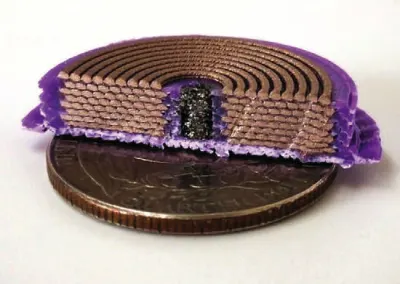 In a groundbreaking leap for electronics manufacturing, researchers at MIT have developed a method to 3D-print solenoids, a key component in many electronic devices. This innovation, detailed in an article by Interesting Engineering, promises to revolutionize the production and functionality of electronic components.
In a groundbreaking leap for electronics manufacturing, researchers at MIT have developed a method to 3D-print solenoids, a key component in many electronic devices. This innovation, detailed in an article by Interesting Engineering, promises to revolutionize the production and functionality of electronic components.
The Significance of Solenoids
Solenoids are electromagnetic coils that convert electrical energy into mechanical motion. They are essential in a wide array of applications, from simple door locks and automotive systems to complex robotics and industrial machinery. Traditionally, solenoids are manufactured through a labor-intensive process involving winding copper wire around a metallic core. This conventional method, while effective, has limitations in terms of design flexibility, manufacturing speed, and cost.
The Innovation at MIT
The MIT team, led by Professor John Hart and graduate student Adam Stevens, has harnessed the power of 3D printing to overcome these limitations. By using a technique called “direct ink writing,” they can print solenoids with intricate geometries and customized magnetic properties. This method involves extruding a conductive ink composed of silver flakes and a polymer binder, which is then cured to form a solid structure.
This 3D printing approach offers several advantages:
- Design Flexibility: Engineers can design solenoids with complex shapes and optimized performance characteristics that are difficult or impossible to achieve with traditional manufacturing methods.
- Speed and Efficiency: The direct printing process is faster and more efficient, reducing the time and cost associated with solenoid production.
- Material Efficiency: By precisely depositing material only where needed, this method minimizes waste, making it more sustainable.
Potential Applications
The ability to 3D-print solenoids opens up new possibilities in various fields:
- Medical Devices: Custom-shaped solenoids could be used in advanced medical equipment, improving their functionality and adaptability.
- Consumer Electronics: Smaller and more efficient solenoids can enhance the performance of gadgets and wearables.
- Automotive Industry: This technology could lead to the development of more efficient and compact actuators and sensors for vehicles.
- Robotics: Customized solenoids can improve the precision and control of robotic systems.
Future Prospects
The MIT team’s work is still in its early stages, but it holds immense promise for the future of electronics manufacturing. As the technology matures, we can expect to see its application expand across various industries, leading to more innovative and efficient electronic devices.
In conclusion, the pioneering efforts of MIT in developing 3D-printed solenoids mark a significant step forward in electronics manufacturing. By leveraging the advantages of 3D printing, this innovation not only enhances the design and functionality of solenoids but also paves the way for more sustainable and efficient production processes. Keep an eye on this space as we witness the transformative impact of this technology in the coming years.


